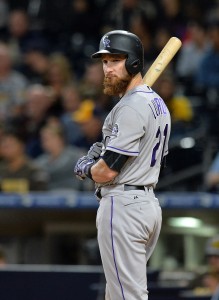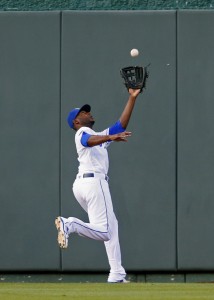While we’ve seen some general movement on the free-agent market, the top of the starting pitching class is still chock full of possibilities. Jake Arrieta, Lance Lynn, and Alex Cobb all figured to command significant contracts entering the winter. These players and their reps have to this point seemingly felt justified in continuing to maintain fairly high asking prices.
Whether or not some or all of these three veteran hurlers can land lengthy, high-AAV contracts will depend upon how the current multi-actor standoff resolves. Who blinks first: a player that decides it’s just time to get into camp or a team that feels it has to get a starter? Will a sudden injury or other development boost demand?
Even without any changes in the market situation, the current staring contest seems to offer plenty of different outcomes. Organizations will obviously feel hopeful of scoring a bargain after seeing some cut-rate prices on hitters. But these pitchers are surely still hoping for some northward bidding movement given the number of teams that still have an evident need.
As they say, it only takes one offer to lead to a big contract. So, I thought it’d be interesting to see whether the MLBTR readership has a favorite to drive the price among the teams still hunting for starters. Put another way: which of these organizations most needs to pony up some cash and land one of these free-agent starters?
(Links to Roster Resource depth charts.)
- Angels — If things work out, the Halos will have six talented hurlers all working out of the rotation. Even if that involves some tag-team disabled list action reminiscent of the cross-town Dodgers, it’s not hard to imagine the Angels getting a lot of good innings from their many risky but talented pitchers. That said, finishing off a fascinating offseason by adding a quality starter would not only enhance the outlook of the rotation but would allow the club to drop an arm into a bullpen that could also probably stand to be improved.
- Brewers — Milwaukee is trying to be targeted in adding around its young core and is justified in exercising some caution. But with Jimmy Nelson still a question mark, the back of the rotation is currently subject to an open competition. While the team has several pitchers with some degree of merit, it’s not a group you’d peg to be capable of chasing down the Cubs and Cards.
- Cardinals — Speaking of the Cards … many have suggested all winter long that St. Louis needs to add more, particularly in the rotation. There’s still plenty of talent on the staff, but most of the anticipated members come with fairly notable levels of risk (injury, age, experience, etc.).
- Mariners — While an early scare to Felix Hernandez may not be cause for concern, his recent track record and the lack of a clear number five starter arguably are. Seattle has long been viewed as a fringe possibility for a rotation upgrade, but some would say it ought to be in the thick of things.
- Nationals — Sure, the Nats could just utilize their internal possibilities (A.J. Cole, Erick Fedde, Edwin Jackson, Tom Milone) for a fifth starter and rotation depth, trusting that the trade deadline will offer a chance to shore up as needed. But this is a team that can’t afford any missteps as it tries to finally reach and advance into the postseason.
- Orioles — The O’s have filled two of their rotation openings and currently plan to compete the third. That’s a defensible strategy, perhaps, but the unit doesn’t inspire much confidence that Baltimore will be able to challenge the highly talented teams that paced the division last year. Another move could go a long way.
- Phillies — It’s hard to call it a need for the still-rebuilding Phils to land a significant starter. Then again, given the amount the front office has invested in short-term assets of late, and the amount spent on Carlos Santana and others this winter, perhaps there’s a case to be made that the organization really should be pushing the market to get a significant hurler.
- Rangers — Indications are that a big contract won’t be handed out and that the team will roll with some kind of six-man rotation unit. But it’s easy to see how a quality starter would transform the pitching staff by installing more good innings in the rotation and bumping other quality arms into the pen.
- Twins — Perhaps taking advantage of the collapse of the market for slugger Logan Morrison means the Twins won’t have as much cash to work with. On the other hand, you could argue that the addition of LoMo and others only creates an opportunity for a more significant investment to really pay off.
- Yankees — Hoping that Jordan Montgomery continues to progress is a perfectly reasonable strategy for filling out the rotation. And there are at least a few depth possibilities still floating around the organization, with a vast array of possibilities at the deadline. But expectations are extremely high in the Bronx and every win will count. Having added an affordable infield option, perhaps the Yanks can and should spend a bit more to finish off their staff.
So, which team really needs to add that big arm? (Link for app users.)

